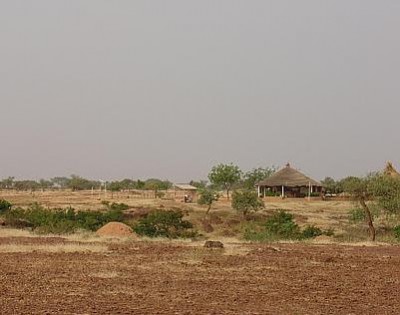Research Team Publishes Results from In-Depth Study of Sahel Climate System
Published: 6 August 2009

In a series of eight papers published between 2008 and 2009 in the Journal of Geophysical Research-Atmospheres, an international team of researchers funded by the ARM Program, the National Aeronautics and Space Administration, and the United Kingdom’s Natural Environmental Research Council have significantly advanced scientific understanding of the climate system in the sensitive sub-Saharan, or Sahel, region of Africa. The team used a novel approach to measure the energy—or radiation—budget across the atmosphere while simultaneously monitoring controlling factors such as clouds, precipitation, water vapor, Saharan dust, and vegetation. They discovered that when the impacts of solar heating and thermal cooling of the atmosphere are combined, the atmosphere over the Sahel loses energy to space at a nearly constant rate during the course of the year, despite wide variations in individual components of the radiation budget, which tend to be remarkably compensatory.
Data for these studies were obtained in 2006 by the ARM Mobile Facility stationed in Niamey, Niger; the European Union’s Geostationary Earth Radiation Budget Experiment; and NASA’s Moderate Resolution Imaging Spectrometer. In combining the measurements, the researchers discovered that the onset of the monsoon circulation in the Sahel region initially attenuates the formation of clouds and precipitation by increasing the stability in the lower atmosphere. Following its initiation, the monsoon layer slowly cools and destabilizes through a combination of mid- and high-level cloudiness and nearby upwelling of cold ocean water. This cooling eventually enables the formation of deep, precipitating convective clouds that stimulate a short-lived, vigorous vegetative growth cycle in which vegetative coverage nearly triples over a period of six weeks.
Despite the seasonally varying influence of clouds, dust, water vapor, vegetation, and the other factors, the net amount of thermal radiation lost to space from the atmosphere over the Sahel is, surprisingly, reasonably constant through the year. This constancy in thermal output was shown by the research team to be linked to the greenhouse gas properties of water vapor in the shallow monsoon layer near the surface. The team also demonstrated that clouds strongly affect the solar radiation budget at the surface and at the top-of-the-atmosphere, but that their role in the climate system of the Sahel region is to vertically redistribute heat rather than modulate the rate of solar absorption. [Contact: Mark Miller, Rutgers University, m.miller@envsci.rutgers.edu]
The ARM Climate Research Facility is a DOE Office of Science user facility. The ARM Facility is operated by nine DOE national laboratories, including .
Keep up with the Atmospheric Observer
Updates on ARM news, events, and opportunities delivered to your inbox
ARM User Profile
ARM welcomes users from all institutions and nations. A free ARM user account is needed to access ARM data.


















